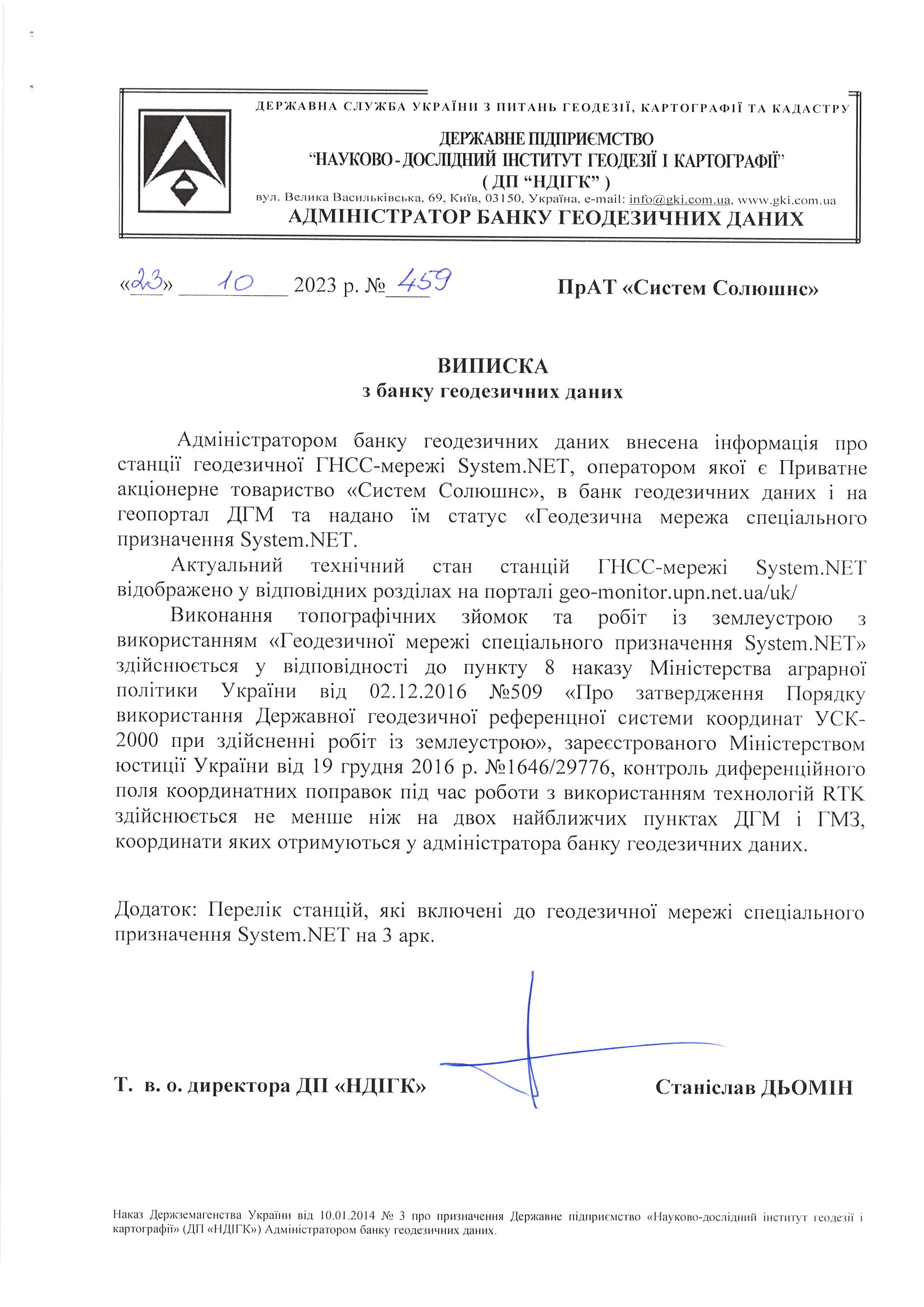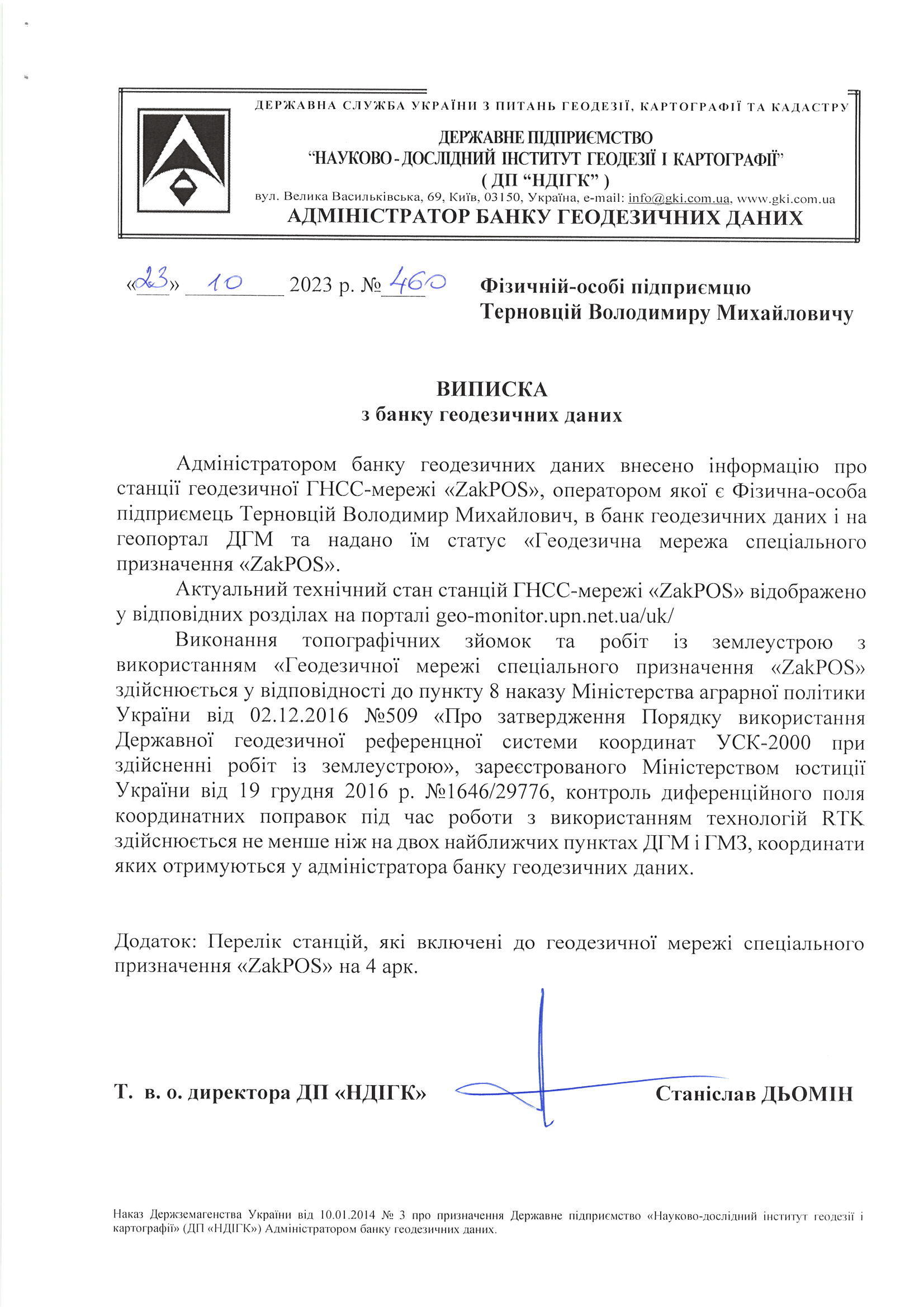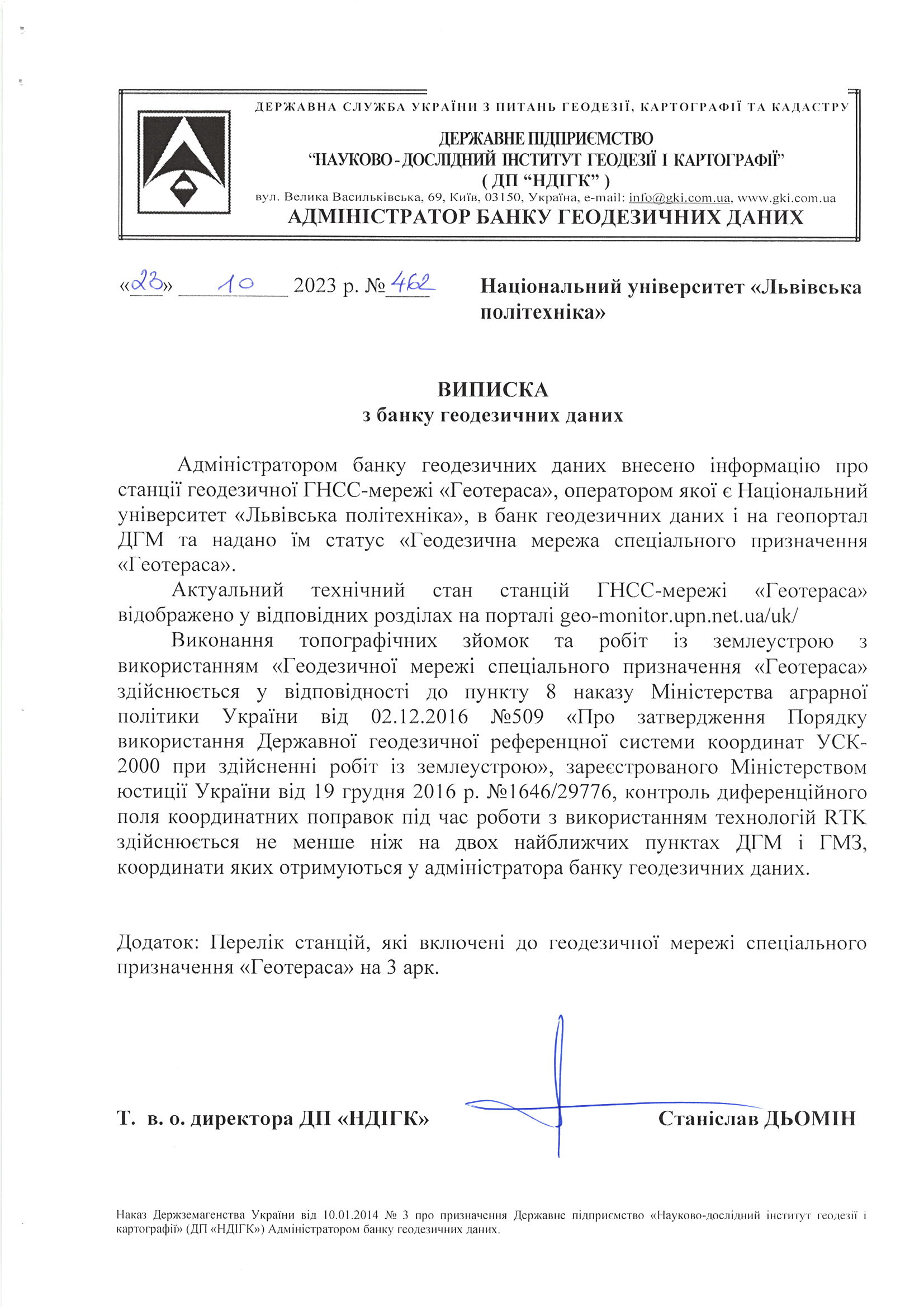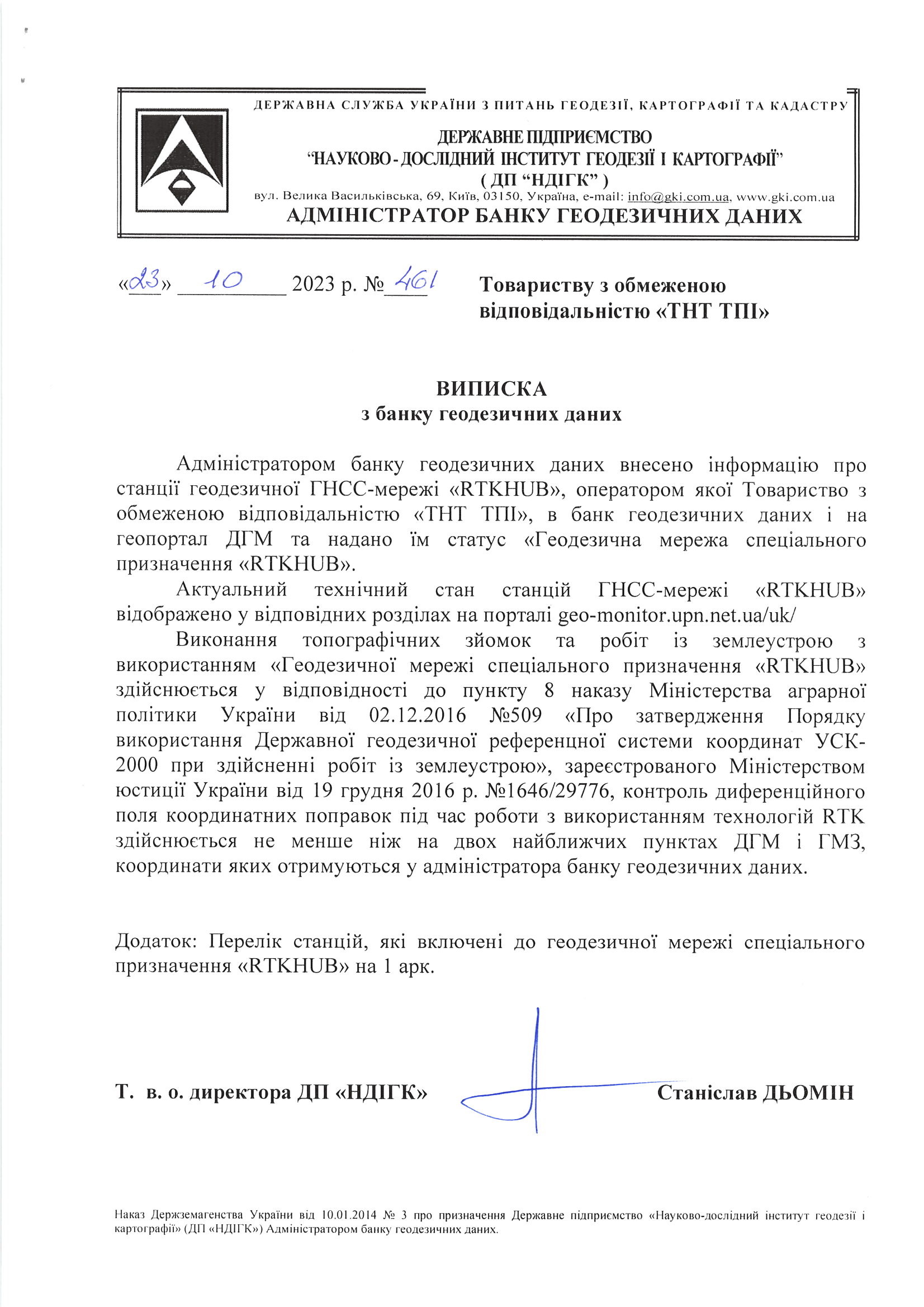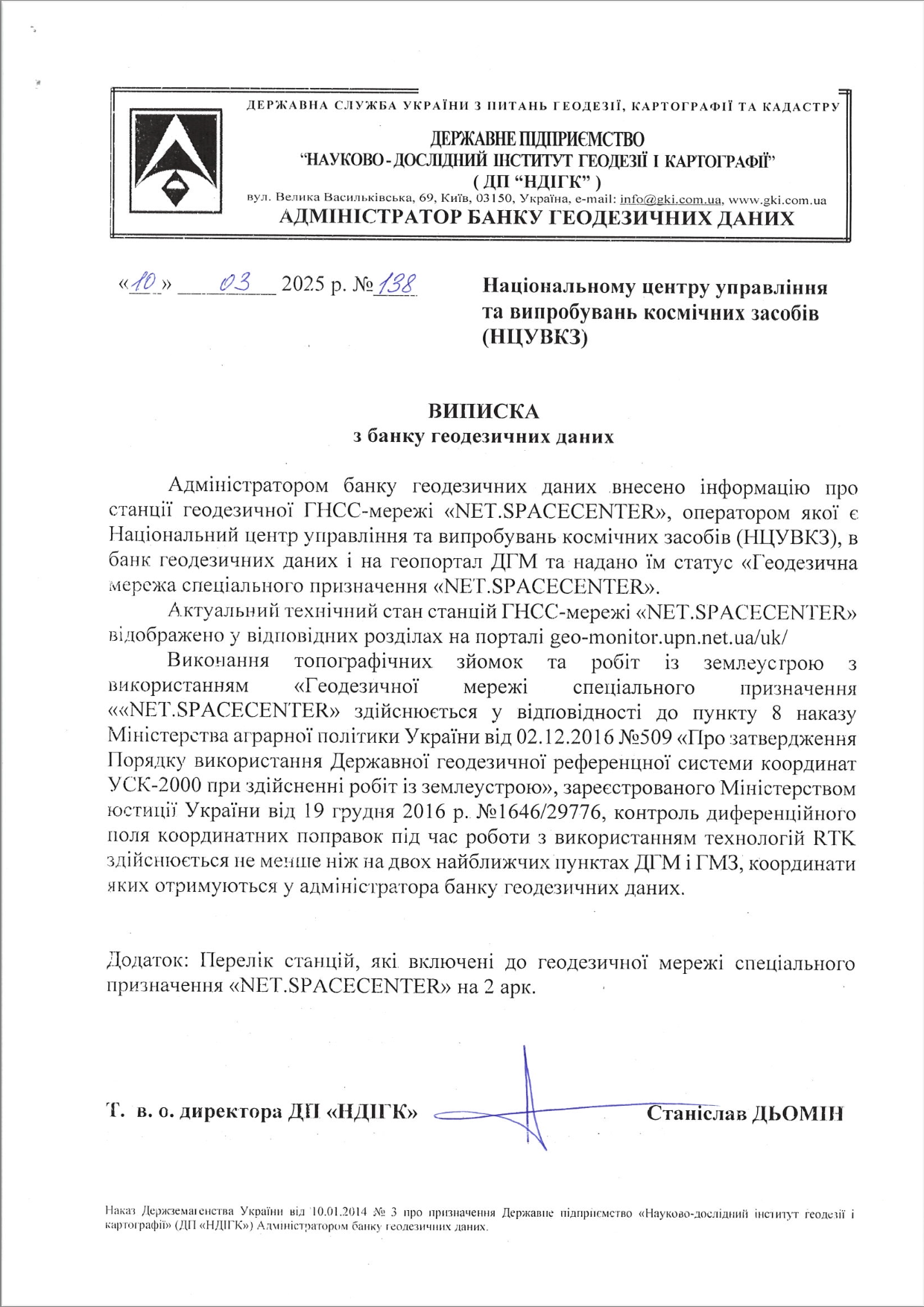GENERAL INFORMATION
From October 1, 2021, the GNSS Data Analysis Center of the RIGC of Ukraine has been conducting regular processing of GNSS observations at permanent GNSS stations located in the territories of Ukraine and neighboring countries. As a result, the coordinates of GNSS stations are available with high accuracy. In parallel, fast processing is performed in the current ITRF reference system in order to monitor the positions of permanent stations. The results are available here .
Rapid products from IGS and CODE (ephemerides of satellite orbits and clock corrections) are used to monitor the stability of permanent GNSS stations with rapid processing. The results are available here .
ITRF2020
The input data for processing observations at permanent GNSS stations are station coordinates and the rate of change of coordinates of the IGS network in the ITRS/ITRF2020 coordinate system and observations at the stations.
Daily solutions are obtained in parallel in two software products GAMIT/GLOBK Version 10.71 and Bernese GNSS Software Version 5.4.
The main parameters used for processing are given below:
| BERNESE | GAMIT/GLOBK | |
|---|---|---|
| Ocean tides | Ocean Tide : OT_FES2014b | |
| Nutations | Nutation model : IUA2000R06 | |
| Atmospheric delays | Atm delay models : VMF3-1° x 1° | VMF1- 2.5° x 2.0° |
| Pole movement |
IERS2010_v1.2.0 Mean pole model
DESAI2016 Subdaily pole model |
IERS2010Mean pole model
DESAI2016 Subdaily pole model |
| Setting the frame of reference | «No-Net-Traslation» condition for the coordinates of IGS GNSS stations: BOR1, BUCU, GLSV, GRAZ, ISTA, JOZE, KTVL, LAMA, MATE, MDVJ, MIKL, NICO, POLV, RIGA, SOFI, SULP, WTZR and ZECK | |
| Atmospheric load corrections | «S1/S2» | |
| Model of the ionosphere | Analysis Center CODE | Analysis Center IGS |
| Coordinate system of exact ephemerides | CODE (GPS, GLONASS, GALILEO) | IGS (GPS) |
| Model of calibrations of phase centers of antenna-dome combinations | An absolute model «I20.ATX» | |
| Minimum viewing angle | 3° | |
| Observation interval | 30 sec. | |
| Duration of the observation session | at least 12 hours | |
UCS2000
The coordinates of permanent GNSS stations in the UCS-2000 State Geodetic Reference Coordinate System are obtained by transforming coordinates from ITRS/ITRF2020 to UCS-2000 based on parameter values and parameter changes published on the official website of the European Permanent Network.
Station coordinates calculated using Bernese GNSS Software are obtained by transforming coordinates from ITRS/ITRF2020 to UCS-2000
Station coordinates calculated using GAMIT/GLOBK are obtained by stabilizing the solution to station coordinates in the UCS-2000 system.
ETRS89/ETRF2014
The coordinates of permanent GNSS stations in the European terrestrial reference coordinate system ETRS/ETRF2014 at the epoch 2022.000 are obtained by transforming the coordinates from ITRS/ITRF2020 to UCS-2000 and from UCS2000 to ETRS/ETRF2014 according to the parameter values and parameter changes published on the official website of the European Permanent Network.
The values of the Helmert parameters between the UCS2000 and ETRS89/ETRF2014 systems (at epoch 2022.000) are:
ΔX = 24.3201 м
ΔY = - 121.3744 м
ΔZ = - 75.7981 м
m = - 0.003440 × 10-6
εx = 0.001428
εy = 0.009193
εz = - 0.011946
where ΔX, ΔY, ΔZ - express the offset vector of the start of the UCS2000 coordinate system relative to the ETRS89/ETRF2014 coordinate system;
εx, εy, εz - angular elements that express the rotation of the axes of the UCS2000 coordinate system to ensure their parallelism with the axes of the ETRS89/ETRF2014 system;
m - scale factor.
